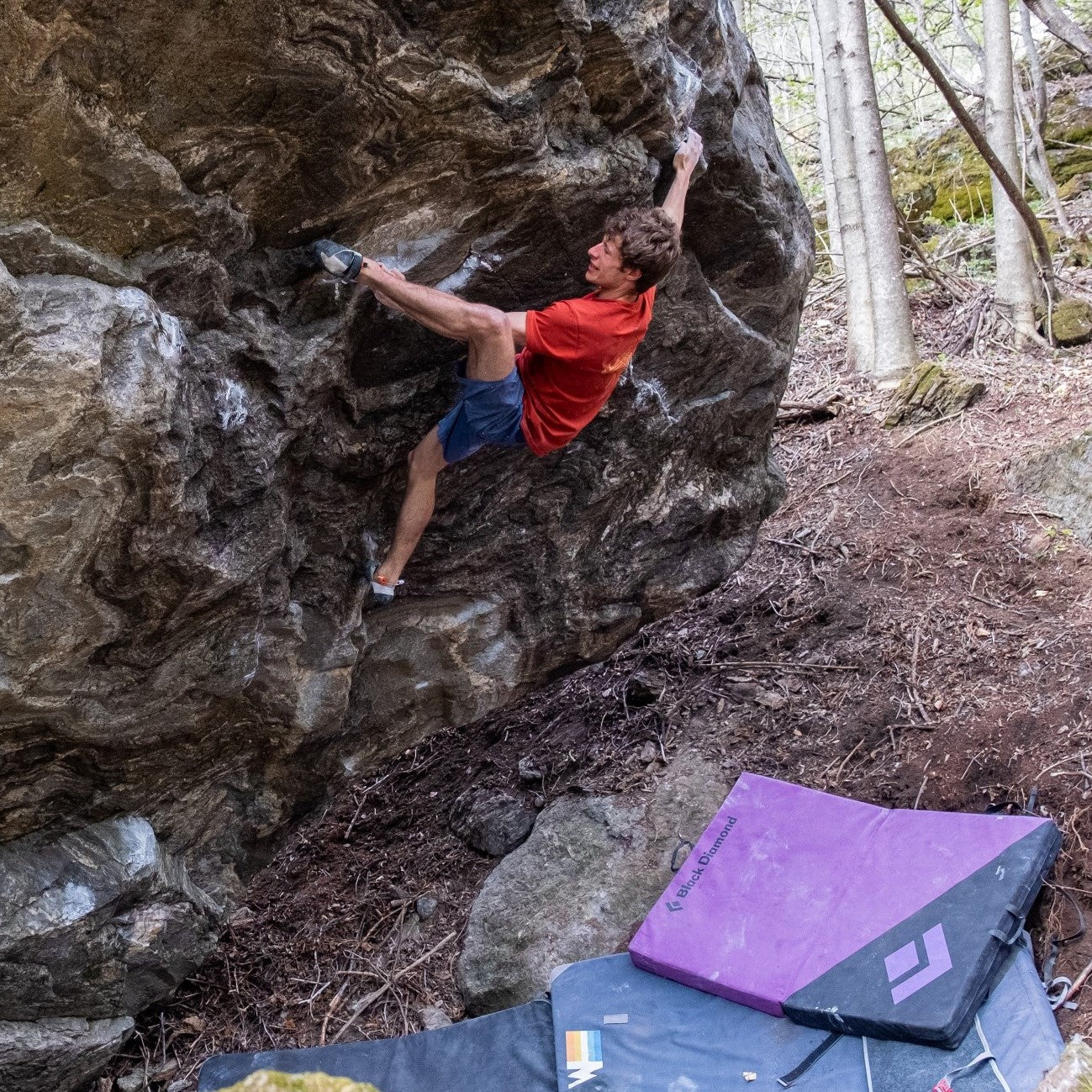
WHAT TO WEAR BACKCOUNTRY SKIING
Dial in your kit for the skin track.
Add 100 EUR more to quality for free Shipping!
€0,00 EUR
As stated earlier, it seems that more climbers are willing to retire a piece of webbing material (or harness or rope) much quicker than a piece of metal gear-and this is a good thing. Our findings from testing old gear retrieved from the field definitely show a great reduction in strength of webbing products, sometimes to the point where field failure is a real possibility. I've definitely heard of several quickdraw or sling failures in the field (even a few in gyms) where the nylon draws are continually rubbing against the abrasive texture of the wall. Luckily there is usually another draw not too far below, so the climbers have come away unscathed short of their hearts being thrust into their throats momentarily.

Slings and quickdraws (note: the webbing part of an actual quickdraw is often referred to as a dogbone) come in many different shapes, sizes, widths and lengths and are usually made from nylon, an ultra-high-molecular-weight polyethylene or some combination of the two. Dynex is the BD name for the polyethylene that we use. Other common brand names are Spectra and Dyneema. For argument's sake, they're all pretty darn similar, so I'll just go with Dynex. Some are sewn together using traditional (or not-so-traditional) bartacks, some are knotted together, and some use a Chinese-finger-trap-type attachment along with sewing.






On one hand it seems the general feeling is that metal products should last forever (which of course they don't) whereas there appears to be some unwritten understanding that fabric type products do actually wear out. Even with that said, however, I have certainly seen some people whipping and rapping off some pretty sketchy draws and slings out there.
Over the years I've been removing worn out fixed gear from cliffs I frequent and testing it. The takeaway from all of them—gear doesn't last forever. Old slings, especially those fixed on sport routes and rap anchors can have a high sketch-factor—but why?

We decided to do a few experiments here in the lab by setting up a few tests where we would compare new slings vs. old slings. We did our best to find representative 'old and well used' samples of what we had new, including:

The idea here was to simulate 1000 falls of 5kN (a bit harsh but realistic) to both new and old slings, and compare to the ultimate strength of a new sling or dogbone.
This was a curiosity test. Exposing the slings to half their rated strength repeatedly until they broke. Not realistic in the climbing world, but maybe it would tell us something.

No surprise here—after beating up the sling for a bit on a rough edge, the ultimate strength is reduced.
Interesting that a few of the samples (both nylon and Dynex runners) didn't even make it through the abrasion portion of the test. This is possibly due to the fact that the webbing was more likely to twist and turn and be cut on an edge instead of having the stiffness of a dogbone which forced the abrasion to be consistently on across the width.
Comparing after the 1000 cycles ultimate strength to no cycles then ultimate strength tested - it appears that the 1000 cycles to 5 kN had a very minimal effect on ultimate strength. Comparing the new vs. old samples, once again, the older worn slings had lower results. Two samples did not even endure the 1000 cycles.


Follow BD Athlete Yannick Glatthard deep into the Swiss Alps as he shares his home...
Follow BD Athlete Yannick Glatthard deep into the Swiss Alps as he shares his home mountains with close friends.

Follow Dorian Densmore and Mya Akins for another winter season of steep Alaskan spines, backyard...
Follow Dorian Densmore and Mya Akins for another winter season of steep Alaskan spines, backyard couloirs, and deep adventures in the mountains.


Watch BD Athlete Alex Honnold throw down on some hard trad high above Tahoe.



In 2012, filmmaker and photographer Ben Ditto, and professional climber Mason Earle equipped an immaculate...
In 2012, filmmaker and photographer Ben Ditto, and professional climber Mason Earle equipped an immaculate line in Tuolumne’s high country. But their attempts to free the route were thwarted when Mason’s life changed drastically. With the help of Connor Herson, Ditto and Mason found a way to keep the dream alive.



Watch and learn as our Field Test Coordinator runs you through a step by step...
Watch and learn as our Field Test Coordinator runs you through a step by step process of trimming and setting up any STS-style Black Diamond skin.


Every climber has a few lines they dream about. Whether inspired or haunted—or sometimes both—these...
Every climber has a few lines they dream about. Whether inspired or haunted—or sometimes both—these lines can push us beyond what we thought we were capable of, in turn teaching us who we really are. BD Ambassador Ethan Salvo recently restructured his entire life to focus on two climbs that pulled him into the void with only one way out … getting to the top. This is his story of sending Dreamcatcher and becoming the first Canadian to climb V16 in the same week.

BD Athlete Connor Herson spent as many weekends as possible in the Valley this spring...
BD Athlete Connor Herson spent as many weekends as possible in the Valley this spring during a grueling quarter at Stanford. The objective? Ground up, in-a-day ascents.
